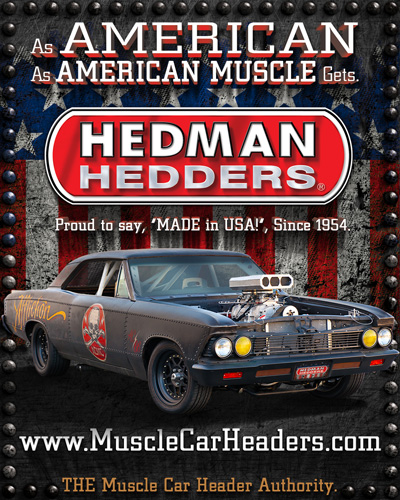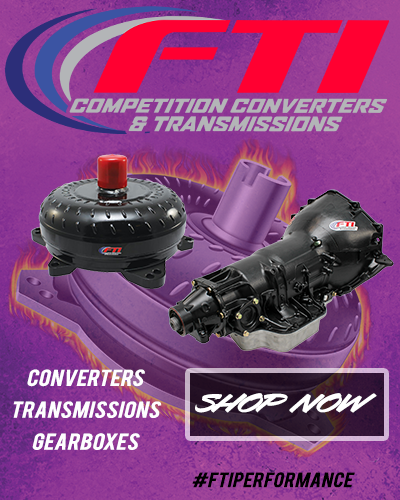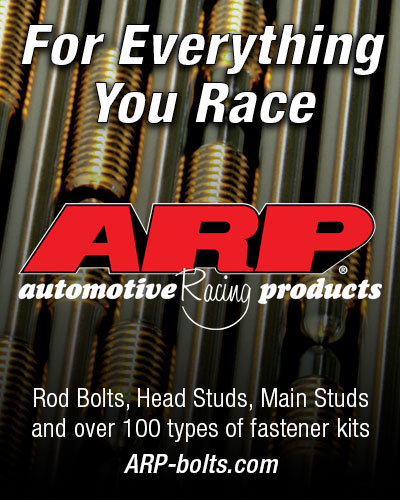DAVE DENSMORE: THERE WAS ONLY ONE BIG MAC
 The phone call I received Sunday morning was not unexpected. I knew that Dave McClelland had been wrestling with the demons of age. Slowly, methodically, they had robbed him of his mobility, his memory, and ultimately his will to unreasonably extend a battle whose outcome, unfortunately, he already knew. As did we all.
The phone call I received Sunday morning was not unexpected. I knew that Dave McClelland had been wrestling with the demons of age. Slowly, methodically, they had robbed him of his mobility, his memory, and ultimately his will to unreasonably extend a battle whose outcome, unfortunately, he already knew. As did we all.
Nevertheless, the finality of knowing that the big, booming, one-of-a-kind voice that once defined NHRA drag racing would now forever be silenced was something for which I apparently was unprepared.
I’ve lost lots of friends the last few years. Raymond Beadle, Dale Armstrong, Paul Candies, Ernie Walker and, sadly, racer and journalist Johnny DiBartolomeo, of whose death I was informed just this morning. At my age, every time the phone rings, there’s a better than average chance it’s another confirmation of the inevitable.
Nevertheless, Big Mac’s passing hit me especially hard, like a Tyson Fury uppercut I would suppose. I know the impact of his loss on motorsports will be immeasurable, but for me it’s purely personal. The fact is, I would not have had a career in drag racing if not for Mac’s persistence. Five times I turned down the job he offered me in California after he was hired as the NHRA’s first Director of Communications.
Had he not asked one more time, I likely would have lived a life of quiet anonymity in Amarillo, destined to fritter away my golden years at any old Home for Broken Down Sports Writers that would have me.
I was working for the Amarillo newspaper when we met in the 1960s. He already was a larger-than-life personality in the sport, the designated announcer at NHRA events across Texas, Oklahoma and Louisiana, the first GM of the new Southland Raceways complex in Houma, La., and a rising superstar on the national stage. I was none of that and, frankly, was in awe every time I was around him.
I am convinced that, had he not decided to go racing, his light would have burned just as brightly in mainstream radio and television, mediums for which he had studied and trained at Iowa State University. After all, while he was working in Shreveport, he won three Associated Press Broadcasters awards for coverage of the murder of accused presidential assassin Lee Harvey Oswald.
Nevertheless, his decision to leave TV after working his way up from announcer to newsman to sports reporter to weatherman to Program Director proved fortuitous for both him and drag racing when he was hired in 1969 as Vice-President and GM of the brand-spanking new Dallas International Motor Speedway, an awesome facility north of Dallas that was the ZMax Dragway of its era.
A contemporary of Ontario Motor Speedway in California, it eventually suffered a similarly unpleasant fate but that was not due to any lack of effort on Dave’s part. On his watch, the track made history as the first to host multiple NHRA national events in the same season – the Springnationals and World Finals in both 1969 and 1970.
However, the facility was expensive to build and equally expensive to operate. With creditors at the door, Mac tried to convince Wally Parks that NHRA should buy DIMS for the good of the sport. Unfortunately, that didn’t not happen. Glendora wouldn’t be ready to take that step for several more years. As a consolation prize, he was hired to organize a national publicity, promotions, marketing and advertising campaign from NHRA’s California headquarters.
The rest is history.
Although he left full-time employment at NHRA in 1978 for an advertising sales position with Argus Publishing, he continued to announce NHRA national events, serve as TV host of NHRA coverage on TNN, produce radio and television commercials and serve as emcee for countless NHRA functions through 2003.
In his spare time, he conceptualized and helped develop the Super Chevy Show series while creating content for a host of diverse clients including NASCAR, AARWBA, SEMA, R.J. Reynolds, the Wally Parks Motorsports Museum, the Petersen Automotive Museum, the International Drag Racing Hall of Fame, Championship Auto Shows, Petersen Publishing Company, Primedia, ProMedia, Ford, General Motors, Chrysler, MOPAR, Toyota, Shelby Automobiles, Castrol, Meguiar’s and The California Highway Patrol.
He was for 25 years a member of the board of Racers for Christ International, proudly serving as chairman until his health issues forced him to take a step back.
Over the course of an amazing and unlikely career, he was presented the Pioneer Award by the AARWBA, the Ollie Award by Car Craft Magazine, the Founders Award by the International Drag Racing Hall of Fame and the Don Prudhomme Award by the NHRA, all for lifetime contributions to the sport.
A member of the NHRA South Central Division Hall of Fame and the SEMA Hall of Fame, he earned motor racing’s ultimate acknowledgement in 2016 when he was inducted into the Motorsports Hall of Fame of America in Daytona Beach, Fla.
Despite all the accolades, my biggest takeaway from a life well-lived is that despite all the challenges of age, he never lost his passion for drag racing or the people within it. Yes, he succeeded behind the mic because he understood the importance of providing a narrative that was timely, entertaining and insightful but, at his core, he was always a racer, a March Meet winner, in fact, at the wheel of the venerable “Tuna Tank” that for years was a fixture at the NHRA museum in Pomona.
One of my endearing memories will be of the “Tank’s” liberation. Freed from its confinement by Dave’s sons, Kevin and Michael, it was restored to racing form and driven at last year’s Nitro Revival at Irwindale Dragway by grandson Daniel. It was a family affair. It also was one of Dave’s last public appearances. I was fortunate and honored to have been there and I know I will have occasion to plumb that memory for strength going forward.
Adios, Big Mac. Rest in Peace.





































